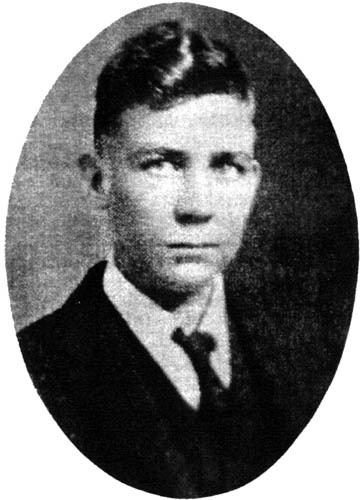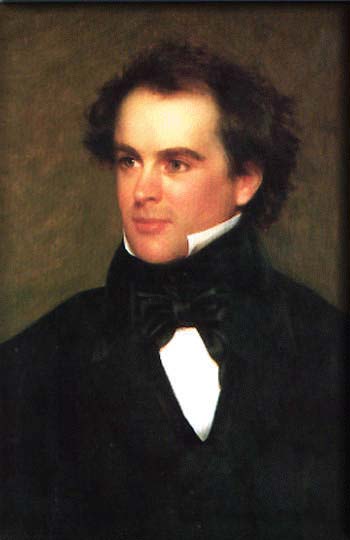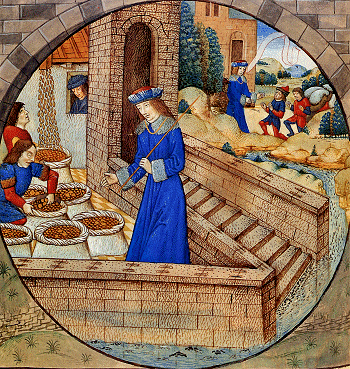Friday, March 16, 2012
Review: "The Woods-Devil" by Paul Annixter
Originally published as a short story in February 1948 issue of Cosmopolitan Magazine, when it was still a sophisticated periodical like Harper's rather than a young woman's interest magazine like Glamour, this is a tale that has haunted me ever since I read it as a freshman in high school back in 1983 in a literary scholastic anthology. It was written under the pseudonym, "Paul Annixter", actually by Howard Allison Sturtzel, and later published ten years later in an anthology collection of short stories entitled, Devil of the Woods: A Collection of Thirteen Animal Stories, as by Paul Annixter, printed by Ayer Publishing Company in 1958. While accessible and of interest to the adolescent mind concerned with the emerging consciousness of newly adult concepts of self-reliance, this story follows the naturalistic school of literature that grew out of the school of realism, fully crystallizing its own distinct form from the late 19th century through the early 20th century. Naturalistic writing is popularly exemplified by Jack London, Joseph Conrad and Stephen Crane. This school of literature sought to make use of the new discoveries of natural science to extrapolate through fiction the animal nature of humankind buried beneath what was perceived to be a veneer of civilized sophistication, moral culture and artificially-conditioned social courtesy. Naturalist fiction writers sought to create imaginative scenarios where our artificial training to be civilized and philosophically composed met the naked test of the ultimate needs of survival or severe conditions of environmentally-induced psychological stress. In "The Woods-Devil" , the adolescent character, Nathan, living in the North Woods of Maine, must alone face the rigors and dangers of the wilderness in winter to sustain the now strained livelihood of his family's lonely homestead, because his widower father is laid up by physical injury. In the depths of an isolated world where survival hangs by a thread, he must face the "woods-devil", a creature his father has warned him of, and which is in fact a wolverine. What is so powerful about this tale is that the author has a narratively unobtrusive scientific understanding of the environment and the dangerous animal to which the young man is pitted, but he combines this with the perceptions of a non-scientific point of view, and the immediacy of experience and oral tradition of understanding to which simple homesteaders (and a boy a no less) are inescapably subject. Here we experience the tension of frightening folklore that is nonetheless based upon the practical edge of survival to which lonely inhabitants were subject in the Maine woods before the arrival of electricity and the broadened perspective and amenities brought by modern transportation. The central character Nathan, finds himself forced to assume an adult role because his father, the only provider remaining in his life, incapacitated by what the boy discovers is the psychologically discomforting revelation of physical vulnerability in his otherwise stoutly capable parent. He must now of necessity fetch the animals caught in the traps set by his father, so that they might have the income to see them through the winter. But there is a competitor for the victims of those traps: the woods-devil. While we may later learn that it is a once common creature of the North American ecosystem related to the badger, commonly called the wolverine, which the American Indians called the "skunk bear" for its stench of musk, ferocity of nature and dangerous proclivities, the author in this story drives us to understand this beast in terms of how a person on the ground with no scientific perspective was forced to cope with such an animal. There is the comfort of knowledge and the remove from untamed nature in which most of us have existed for over eighty years. The author vividly forces us to inhabit only the reality the young adolescent Nathan must face in the sylvan desert of this story. It would not even matter if he had had access to our scientific works of reference. Any such blandly empirical knowledge would not mitigate the danger he faces in his lonely journey to check the series of traps set by his father in the hunger of winter's wasteland. The boy has no contraptions to protect himself from this animal in the starving madness of winter's depths. The wolverine is an intelligent animal that cunningly and aggressively seizes the opportunities provided by humankind's snares of its natural quarry. Nathan is forced to compete with a creature, which for all intents and purposes, has a numinous effect on his psyche and exercises a very material threat to his physical wholeness and continuance. The young man must discipline not only his childish fears, but also the very real practical threat that even a full-grown man must face in his trek through the snow-bound wilderness of America's northernmost state. When I read this of an age level with the main character, I palpably felt his fear, his psychological tension, his willful determination, his inaugural sense of real vulnerability being risked for the sake of the survival of his household. One cannot exaggerate the skill with which Annixter puts the reader in the cockpit of this story's naturalistic sense of Nathan trying to balance his fight-or-flight instincts with a singular determination of mind to survive (and simultaneously help save the remnant of his family), and this without recourse to any form of help from a broader human community. When I read this as a newly-emergent teenager, I needed to cross no literary hurdle to identify with and be absorbed by the words of this tale. It was a story that I consumed as naturally as air and water, and it has left me pondering the nature of the human pioneer in the face of nature's less kindly side. Nathan's tenuous hold on survival by hiding in a hollow log when he at last crosses paths with the forewarned creature of hellish nature is an image burned in my mind as deeply as any actual experience I underwent in the real life I have since lived. Wolverines may be a merely a curiously irascible creature that we may watch and bemusedly learn about within the safety of our living rooms as the subject of a documentary on some educational cable channel, but Annixter reconstructed the intimidating and superstitious aura this animal must have once exercised upon the human psyche, when isolated settlers had no other resource than their bare wits and the practical wisdom of intimate experience.
Subscribe to:
Post Comments (Atom)



























Did you know that Annixter and his wife re-wrote this story at novel length in Windigo (1963)? Both the story and the novel are great reads.
ReplyDelete